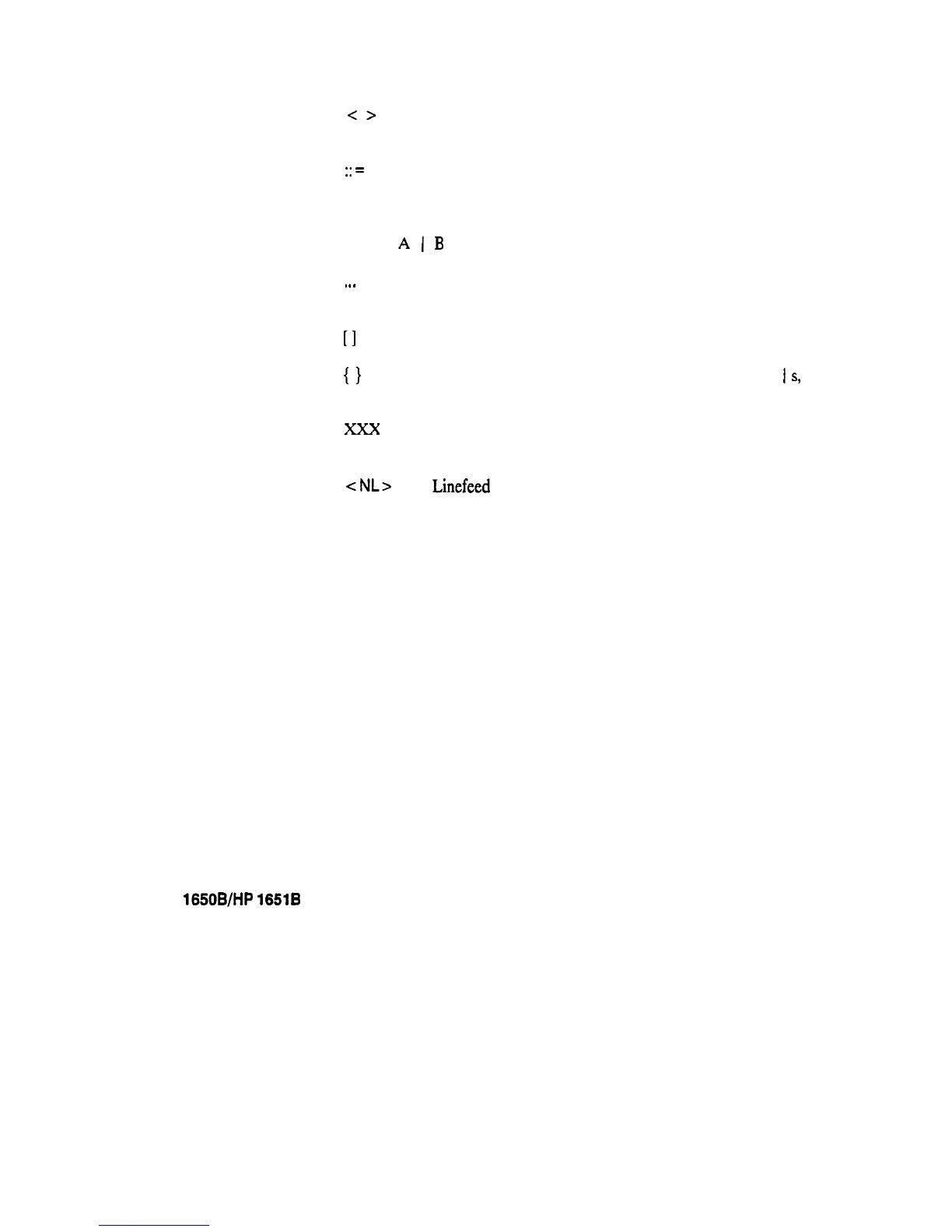HP
1650B/HP
16518
Programming Reference
<>
::
=
I
.
.
.
[I
0
Angular brackets enclose words or characters that are used to
symbolize a program code parameter or a bus command.
“is defined as.” For example, A :: = B indicates that A can be
replaced by B in any statement containing A.
“or”: indicates a choice of one element from a list. For example,
A
I
B
indicates A or B, but not both.
.
An ellipsis (trailing dots) is used to indicate that the preceding element
may be repeated one or more times.
Square brackets indicate that the enclosed items are optional.
When several items are enclosed by braces and separated by
1
s,
one,
and only one of these elements must be selected.
Three Xs after an ENTER or OUTPUT statement represent the
device address required by your controller.
<NL>
:: =
Linefeed
(ASCII decimal 10).
Programming and Documentation Conventions
4-3

